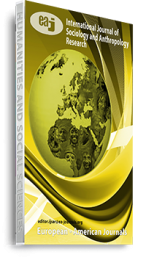This article is a part of research result entitled “Tidung People at the Border Building Nation, Keeping Harmony: A Study of Interethnic Relations in Nunukan Regency of North Kalimantan.This critical ethnographic research examines the construction of ethnic identity and cultural aspect of Tidung people in Nunukan regency. The data were analyzed interactively including data reduction, data display, and verification.In the development, Tidung people in some areas such as in Tarakan are classified as developed; whereas, in other area such as Nunukan, they are classified as people with modest living. The simplicity of Tidung people in Nunukan regency is reflected in their cultural orientation for a homely life. In religious life, Tidung older generation is classified as pluralistic Islam while the young generation tries to release themselves from pluralism in their religion.In this reformation era, the awareness of strengthening political identity is appeared as indicated by the emergence of “Pan Dayak” that reflects brotherhood between the Dayak and Tidung people in PUSAKA (The Association of Kalimantan Natives) organization. The spirit of political identity renaissance should be observed, because Nunukan regency is a pluralistic area especially for the Bugis who control the area, economically and politically. Therefore, proper management of interethnic relations is necessary to make the situation in Nunukan regency remain under control.
Keywords: Culture, Ethnic Identity, Religious Life, Tidung People

